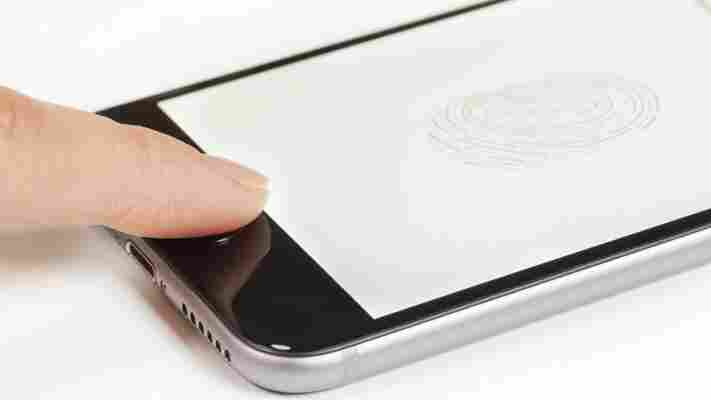This Pokeball charges your phone while you’re binging on Pokemon Go
Pokemon Go is consumptive. It asks a lot of your time, but also drains your phone’s battery and chips away at your data plan . There’s now a clever fix for the battery life issue, if you don’t mind carrying a real Pokeball.

An enterprising Etsy seller has created a Pokeball phone charger , which is little more than a 5,300 mAh battery pack tucked inside a sphere. It has a single USB port for charging your phone, and a micro USB port for those times you need to charge your Pokeball.
While 5,300 mAh isn’t the largest battery pack you can get, it’s enough to charge your phone from nearly dead at least twice. You gotta catch ‘em all, right?
It’s a bit bulky, though. If you’re game to carry around something the size of a bocce ball, have at it. It’s a bit much for me, and calls a lot of attention to whoever is holding it — and you may not want that .
There are also better options out there. I really enjoy the Aukey 12,000 mAh pack , and if you’re really dedicated — there’s a quick-charging 20,000 mAh battery pack that can keep you catching Pokemon for days.
Or you can get an actual generator and stay outside for a month or so. But if you’re that serious about Pokemon Go, we suggest scheduling some counseling with a professional.
The Pokeball charger is $40, but don’t expect to get it any time soon; it’s handmade, and I’m sure there will be a ton of orders .
3D printers could replicate your fingerprints to help unlock phones – even after you’re dead
Fusion reports that police officers contacted Michigan State University professor Anil Jain recently to recreate a dead man’s fingers using a 3D printer, so they could unlock his phone and sift through its content for clues.

Details are scare because the investigation is still underway. But Jain said that the deceased person in question was the victim in a murder case, not the attacker. Law enforcement officials had his fingerprints on file as he was arrested in a previous incident, and handed those over to Jain for replication.
The victim’s phone hasn’t yet been unlocked – Jain has created replicas of all ten digits, but is still working to refine them so the plastic fingers coated with metallic particles can be read by a fingerprint scanner as easily as human fingers, which are more conductive.
If this method works, it’ll prove once again that fingerprints aren’t as secure as we’d like to believe when it comes to locking our digital devices.
In October 2014, a Virginia court ruled that suspects can be asked to unlock their phones using their fingerprints. In contrast, PINs are more secure because the Fifth Amendment prevents government agencies from compelling people to turn over things in their minds, like memorized passcodes.
It’s also worth keeping in mind that phones locked with a fingerprint usually require a PIN to be entered if it hasn’t been used in 48 hours, or if it’s been powered off and back on again. In both instances, fingerprints are of no help, regardless of how they’re obtained.
This case could also set a precedent for law enforcement gaining access to people’s phones more easily. If a person has been arrested and their mobile device has been confiscated, they could be asked to merely submit to a fingerprint scan that would give police everything they need to create replicas for unlocking a phone.
The extent to which fingerprints and PINs can help protect our privacy seems to be rather limited; ultimately, what we really need is transparency and oversight when it comes to how our digital data is handled by law enforcement and government agencies.
Please appreciate Mozilla’s security-focused gift guide
Shout out Mozilla. The not-for-profit company behind the web-browser Firefox has put together a gift guide with a difference. Instead of ranking the products on the guide by some metric like, I dunno, ‘coolness,’ they’ve analyzed them by how secure they are.

The Privacy Not Included guide includes 70 popular products. The majority of these are well known, such as the Nintendo Switch, the Amazon Echo, and Apple’s Airpods. Still, there is a range of less common gadgets, like the Parker Teddy Bear, the Hidrate Spark 2.0 Water Bottle, and the FREDI Baby Monitor.
“The goal was to select connected products that were likely to be popular during the holiday season and beyond,” Becca Ricks, a former Mozilla Fellow and researcher on the guide, told TNW. “We selected products that were top sellers on Amazon Prime Day… and products that were highly rated.”
Right – so how does Mozilla rank the security of the gear?
I’m glad you asked. Mozilla has put together a list of its minimum security standards for gadgets. You can read the full thing here , but we’ve summarized it for ease below:
Encrypted communications , meaning your data can’t be easily intercepted
Automatic security updates, so any flaws can be quickly patched
Strong and secure passwords, because… well, you know why
A vulnerability management pathway , so bugs can be reported easily and managed
A privacy policy that can be found with minimal hassle and is written in clear, simple to understand language
And how many passed Mozilla’s minimum security standards?
32 products received the fancy Minimum Security Standards badge.
That seems… low, but kinda expected
Yeah, it means that 50 percent of the gadgets tested were okay. And that’s the important word: okay. These were ranked by a minimum standard, so it’s not as though all 32 gadgets that passed were paragons of security.
In terms of the devices that received this accolade, the Nintendo Switch, the iPad, the PS4, the Google Home were all deemed to meet the minimum standards.
Those that didn’t included the aforementioned FREDI Baby Monitor (which seems to have got the worst score of all) and the Amazon Fire HD Tablet.
Right. This is all useful, but will this actually influence consumers?
“There’s a lack of strong standards in the IoT space, both for securing networked devices and for keeping data private,” Ricks told us. “We hope consumers will use this tool not only to guide their purchasing decisions, but also to educate themselves about how companies approach privacy and security”
She concluded: “Hopefully [consumers] will pause and reflect before purchasing devices that seem to be less secure.”
We hope so too, but will they? No, probably not.
While the work that Mozilla has done here is brilliant, it’s fighting an uphill battle. Simultaneously, technology companies are pushing boundaries, while populist governments are promising less regulation. This has left a gap when it comes to serious supervision of certain new markets. You know, like internet-connected devices.
It’s heartening to know that Mozilla is out here trying to make a difference. The question is whether the run-of-the-mill consumer will listen. I assume that most people who will read and take advice from Mozilla‘s report are already wary of data-hoovering companies like Amazon and Facebook.
Still, it’s hard to be too critical. I just hope that the world appreciates Mozilla as much as we do.
